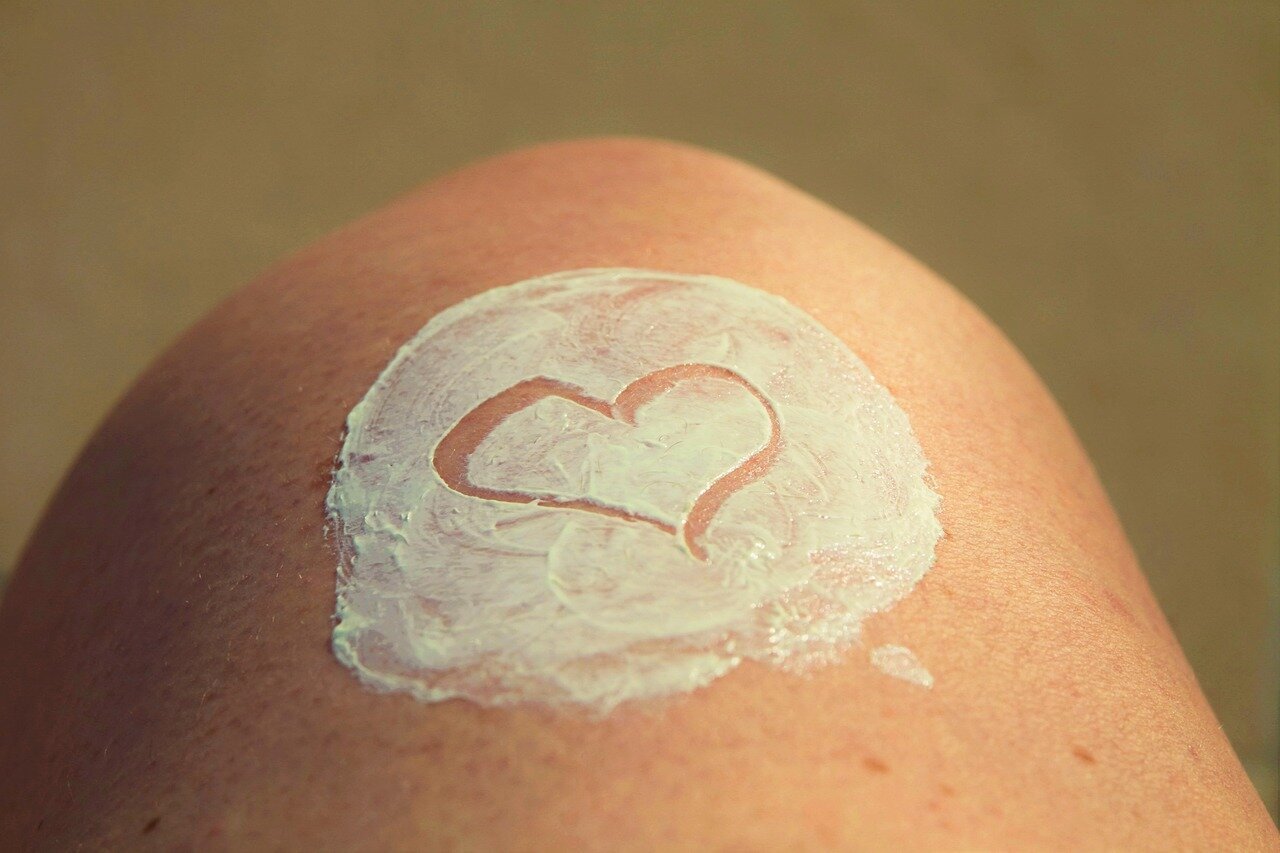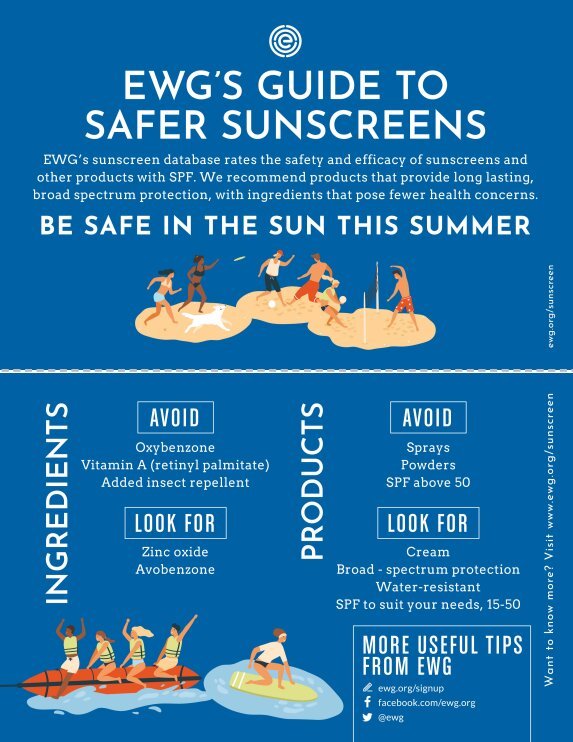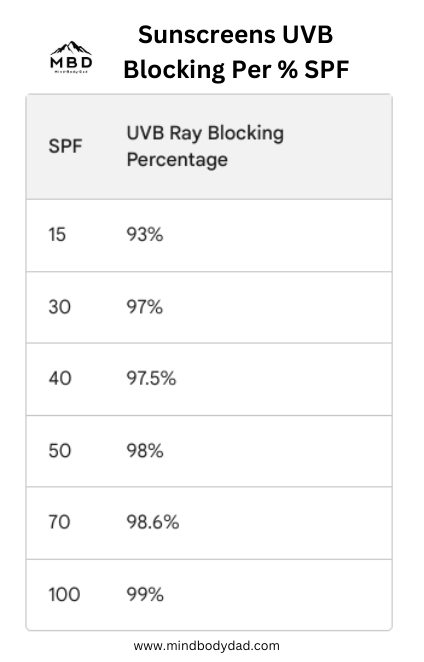The Best Natural Sunscreens For Kids (& What To Avoid)
I vividly remember the first time my son had a sunburn. I was trying to keep him under the shade as we spent the afternoon on the beach during his first summer. I brought him to the water to dip his toes in, play with some sand, and be a spectator to the excitement that was his future. I didn’t realize it until we got home and out of the sun but his feet and hands were red and painful.
That was a heart-wrenching feeling. I didn’t do a simple task to prevent the sun from causing pain and cell damage to my child who is totally dependent on me to keep him safe.
Fortunately, his skin healed quickly and the emotions I felt have remained with me, to be used as motivators. Not only am I motivated to never let that happen again but I want to avoid any risk of damage to his skin by both the sun and the sunscreens that are supposed to prevent the damage.
Now each year I look forward to the release of the annual EWG sunscreen guide to buy up the healthiest (and least expensive) natural sunscreens to use with my kids. Before I list the best of the best on this list, let’s look at what natural sunscreens are and why you should use them with your kids.
Traditional Vs. Natural Sunscreens
The Problem With Traditional Sunscreens
Traditional sunscreens often contain chemicals such as oxybenzone, octinoxate, and homosalate, which have been linked to potential health risks. Once these chemicals are on the skin they have the potential to be absorbed “into the human systemic circulation and subsequently might result in exposure of all tissues in the body.” This may increase the risk of hormone disruption, allergic reactions, and even cancer. Additionally, Oxybenzone and octinoxate have been shown to cause coral bleaching and are now banned in many areas to protect ocean ecosystems.
Here are some other chemicals found in traditional sunscreens that are not considered safe, according to the EWG:
Oxybenzone: a chemical that can cause hormone disruption and has been linked to coral reef damage.
Octinoxate: another chemical that can cause hormone disruption and has been linked to coral reef damage.
Homosalate: a chemical that can disrupt hormones and has been linked to skin irritation.
Octocrylene: a chemical that can cause skin allergies and is known to accumulate in the body.
Retinyl palmitate (Vitamin A palmitate): a form of Vitamin A that can increase skin sensitivity to sunlight and may accelerate skin damage. It’s been shown to produce excessive reactive oxygen species as well.
Parabens: preservatives that can cause hormone disruption and have been linked to breast cancer.
Phthalates: a group of chemicals that can cause hormone disruption and have been linked to birth defects, asthma, and reproductive problems.
Insect repellant: Sunscreen with added insect repellant is often made with toxic ingredients.
Natural Sunscreens
Natural sunscreens, on the other hand, use mineral-based ingredients like zinc oxide and titanium dioxide to physically block or reflect the sun's harmful UVA and UVB rays. These ingredients work by sitting on top of the skin and creating a physical barrier that prevents the sun's rays from penetrating the skin. As a result, natural sunscreens are less likely to cause skin irritation or allergic reactions, making them a better option for those with sensitive skin.
There are a number of different natural sunscreens available on the market. Some of the most popular ingredients include:
Zinc oxide: Zinc oxide is a mineral that is known for its sun-protective properties. It is also non-comedogenic, meaning it will not clog pores.
Titanium dioxide: Titanium dioxide is another mineral that is effective at blocking UV rays. It is also non-comedogenic and has a white cast that can be difficult to blend in.
Iron oxides: Iron oxides are a type of pigment that can also help to block UV rays. They are often used in tinted sunscreens to provide additional coverage.
One common complaint about natural sunscreens is the potential for the mineral-based ingredients to leave a white cast on the skin. However, many natural sunscreen brands have now developed non-nano mineral-based particles that are smaller in size, making it way easier to rub in that white residue.
Here are some of the benefits of using natural sunscreens:
They are made with ingredients that are derived from plants, minerals, or other natural sources.
They do not contain any synthetic chemicals, such as oxybenzone, octinoxate, or avobenzone.
They are water-resistant.
They are non-comedogenic, meaning they will not clog pores.
They are often fragrance-free.
They are less likely to cause allergic reactions.
They are better for the environment.
Why Kids Should Use Natural Sunscreens
Children's skin is generally more sensitive and delicate than adult skin, which means they are more susceptible to the harmful effects of traditional sunscreens. A 2014 study found the skin of young children have “anatomical and functional characteristics that make it more susceptible to UV radiation damage than adult skin.” These include smaller cells of the epidermis, a lower concentration of natural moisturizing factors, and a lower collagen fiber density.
Additionally, children's skin has a larger surface area in proportion to their body weight, which means that kids absorb more of the chemicals in traditional sunscreens.
Here are reasons why kids should use natural sunscreens:
Natural sunscreens are safer for kids. They do not contain harmful chemicals like oxybenzone and octinoxate, which have been linked to a number of health problems, including hormone disruption and cancer. The FDA warns that children may be at a higher risk of harm from oxybenzone “because of the potential for higher absorption and bioaccumulation.”
Natural sunscreens are more gentle on kids' skin. They are less likely to cause irritation or allergic reactions.
Natural sunscreens are more effective at blocking the sun's rays. They reflect and scatter the sun's rays, rather than absorbing them, which means they provide better protection from both UVA and UVB rays.
What To Look For: SPF, Broad Spectrum, & Spray Sunscreen
The Lowdown On SPF
SPF, or sun protection factor, is a measure of how well a sunscreen can protect the skin from the harmful effects of the sun's ultraviolet (UV) radiation. The higher the SPF, the more protection a sunscreen can provide.
But a higher SPF doesn’t mean better. Picking an SPF above 30 gives marginal benefits of 2% or less. Choosing a higher SPF doesn’t necessarily mean longer protection either. While picking an SPF with a higher SPF won’t cause harm, sunscreens with higher SPF may be marked up in price, preying on your desire to provide “more protection” without providing anything beyond minuscule benefits compared to SPF below 50.
What’s more important than the SPF number is the frequency at which you apply it.
Broad Spectrum Sunscreen
UV rays consist of two types: UVA and UVB. UVB rays have shorter wavelengths and are the primary culprit for sunburns. UVA rays, with their longer wavelengths, penetrate the dermis causing premature aging, wrinkles, age spots, and skin cancer.
Standard sunscreens only block UVB rays and not UVA rays unless it says “broad spectrum”. Natural sunscreens tend to be broad spectrum, blocking both uVA and UVB but not always in the best ration. Look for EWG’s UVA/UVB balance criteria to determine if a sunscreen has optimal balance.
Avoid Spray Sunscreen
Wrangling a kid to lather on sunscreen is like catching a greased pig. It’s messy, exhausting, and no one wins. It only makes sense to go with the spray option but, unfortunately, this comes with some health concerns.
The EWG reports that “FDA testing found some aerosol products released particles that could be absorbed deep into the lung, where they could cause irreversible damage. The agency proposed that tests of sprays be required, but it has yet to finalize this action.”
Furthermore, research has found that using these spray sunscreens on even relatively windy days has a significant impact on the application. Australian researchers found that,
“The proportion of sunscreen lost due to the impact of wind varied between products and ranged from 32%-79% for 10 kph and 28-93% for 20 kph.”
The best bet is to avoid spray sunscreens. If this idea is too tough then, at the very least, choose a sunscreen that’s labeled "non-aerosol." Non-aerosol sunscreens don’t contain propellants, which means they are less likely to be inhaled. Second, spray the sunscreen into your hands and then apply it to the skin directly using your hands. This will help to reduce the amount of sunscreen that you inhale and the amount that’s lost in the wind.
EWG’s Annual Sunscreen List
The Environmental Working Group (EWG) is a non-profit, non-partisan organization that specializes in research and advocacy in the areas of public health and environmental issues. The EWG is perhaps best known for its annual sunscreen guide, which ranks sunscreens based on their safety and effectiveness. The organization also produces a number of other consumer guides, including those related to food, household products, and personal care items. The EWG is funded by donations from individuals, foundations, and organizations, and it does not accept money from the government or corporations.
Each year I look forward to the list of the best sunscreens they put out. While the store shelves are lined with plenty of similar-looking sunscreens, the EWG has found that what companies say in their sunscreens is not always in their sunscreens. For example, they found that “sunscreens sold in the U.S. offered inadequate UVA protection, despite what the listed SPF suggests. This gives sunscreen users a false sense of safety, risking overexposure to UVA rays.”
EWG is also much more updated and rigorous than the 2011 FDA standards. The FDA last updated its safety standards in 2011 and face all of the sunscreen ingredients a thumbs up for use, despite known risks.
The Environmental Working Group (EWG) evaluates and ranks sunscreens each year based on the following 5 criteria:
Health hazards: based on databases of ingredients from multiple sources
UVB protection: using the SPF value
UVA protection: using an absorbance model
Balance of UVA/UVB protection: using the modeled UVA absorbance to labeled SPF value ratio
Sunscreen stability: using a stability database to determine how quickly ingredients breakdown
A List Of The Best Natural Sunscreens For Kids
Here is a list of the best natural sunscreens for kids based on this criteria:
Highest possible score for EWG’s Health Concerns criteria
Highest possible score for EWG’s UVA/UVB Balance scores
All broad spectrum
No fragrances or dyes
Best value. The budget friendly ones have the best cost-to-ounce ratio as of the time of publishing.
The Best Natural Sunscreen Lotion
Earth Mama Bundle (SPF 40, 3oz. Lotion, .74oz. Stick). Use MINDBODYDADY for 10% off.
Babo Botanicals Baby Skin Mineral Sunscreen (SPF 50, 3oz.)
Badger Baby Organic Mineral Sunscreen Cream (SPF 40, 2.9oz.)
Budget Friendly: Thinksport Kids Mineral Sunscreen (SPF 50, 6oz.)
The Best Natural Sunscreen Sticks
Earth Mama Bundle (SPF 40, 3oz. Lotion, .74oz. Stick). Use MINDBODYDADY for 10% off.
Olita Mineral Sunstick (SPF 30, .6oz)
Raw Elements Baby + Kids Organic Sunscreen Lotion Stick (SPF 30, 1oz.)
Budget Friendly: Waxhead Baby Sunscreen (SPF 35, 4oz.)
What I Do
While I am a huge advocate for the benefits of sunlight, there is too much of a good thing, especially with kids.
Each year I look forward to the EWG’s list of the safest sunscreens. I rummage through the list to find the highest-rated ones, then I search for the most affordable ones, and then I immediately have them shipped to stock up for the summer.
More Sun Tips For Kids
Here are a couple of other things worth noting that we do.
Limit or avoid sunglasses. When we wear sunglasses our eyes don’t get the cue to create melanin, a pigment produced by melanocytes, that gives us a tan to further protect us from the sun. Sunglasses, therefore make us more susceptible to the sun and sunburn. What’s worse is that the cheap kid sunglasses don’t have adequate UV protection which can increase the damage to their eyes.
Use a roll-on sunscreen sponge applicator. This thing is great. Fill the container with sunscreen and voila you have a device that can paint a kid’s body with sunscreen in no time, or better yet, a device that they will like using to put on their own sunscreen. You can also just use a makeup brush dedicated to sunscreen. Another tip for the young ones: put them in their car seat first to apply sunscreen if they’re squirmy.
Use sunshades in the car. Because a window prevents most UVB rays from penetrating and only allows UVA rays. This high exposure of UVA rays means a higher likelihood of premature aging of the skin, a suppressed immune system, and the development of skin cancers. For longer car trips apply sunscreen and also consider using a sunshade (like this one) that goes over the car windows.
Takeaway
Traditional sunscreens often contain chemicals that pose potential health risks. Chemicals like oxybenzone, octinoxate, and homosalate can be absorbed into the body and may lead to hormone disruption, allergic reactions, and even cancer. In contrast, natural sunscreens use mineral-based ingredients like zinc oxide and titanium dioxide to physically block the sun's rays. These ingredients create a barrier on the skin's surface, providing effective protection without causing skin irritation or allergies.
This makes natural sunscreens a safer and gentler option for children, who have a higher risk of absorbing chemicals from traditional sunscreens due to their larger skin surface area in proportion to their body weight. Natural sunscreens not only offer better protection but also reduce the potential for harmful health effects, making them a preferred choice for kids. Use the annual EWG sunscreen guide to help you determine the safest ones.





